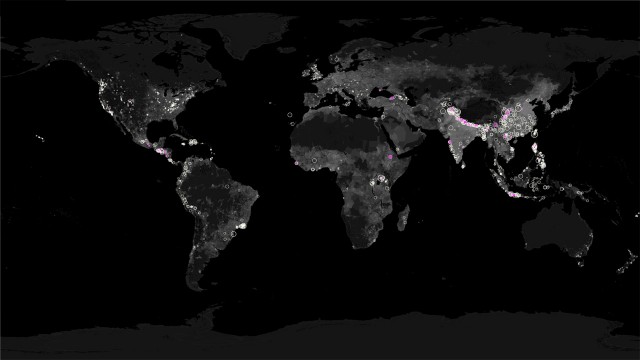1 September 2015
NASA landslide video visualizing rainfall-induced mass movements between 2007 and 2015
Posted by Dave Petley
NASA landslide video
The Weather Network has a report a new NASA landslide video. This is a visualization of recorded rainfall-induced landslides since 2007. The NASA Visualization team has provided the following text to explain the animation:
In 2010, NASA scientists released the first publicly available catalog of rainfall-triggered landslides using information collected from online databases and media reports that date back to 2007. Recently, the catalog has been updated to include landslide events from the last five years. Scientists have begun to compare events with satellite rainfall measurements to determine where and when landslides are likely to occur. Watch the video to see the distribution of rainfall-triggered landslides that took place from 2007 to 2015.
Unfortunately I below is the best embed of the NASA landslide video that I can manage at present, but the NASA Visualization Lab has a better version.
But you can access it via the NASA Visualization Explorer. This is a map of all 6500 landslides in the dataset that drives the visualization. Unfortunately no explanation is given for the different size and colour of the symbols, but in the video the size of the circle represents the number of fatalities and the pink color represents the number of days since the landslide occurred.:
.
Note the focus of landslides along the Himalayan Arc and in China, as well as in the Philippines and Indonesia. This data records more landslides in more developed countries, such as those in Europe and North America. I find the apparently low incidence of landslides in Japan in the NASA landslide video surprising.
The results are pleasingly similar to my own dataset on global landslide fatalities. The major difference is that the NASA dataset records all rainfall induced landslides, and as such is more comprehensive, which is useful. The downside is that it might be less consistent perhaps, with a strong bias towards countries with more people and a a strong media presence.



 Dave Petley is the Vice-Chancellor of the University of Hull in the United Kingdom. His blog provides commentary and analysis of landslide events occurring worldwide, including the landslides themselves, latest research, and conferences and meetings.
Dave Petley is the Vice-Chancellor of the University of Hull in the United Kingdom. His blog provides commentary and analysis of landslide events occurring worldwide, including the landslides themselves, latest research, and conferences and meetings.